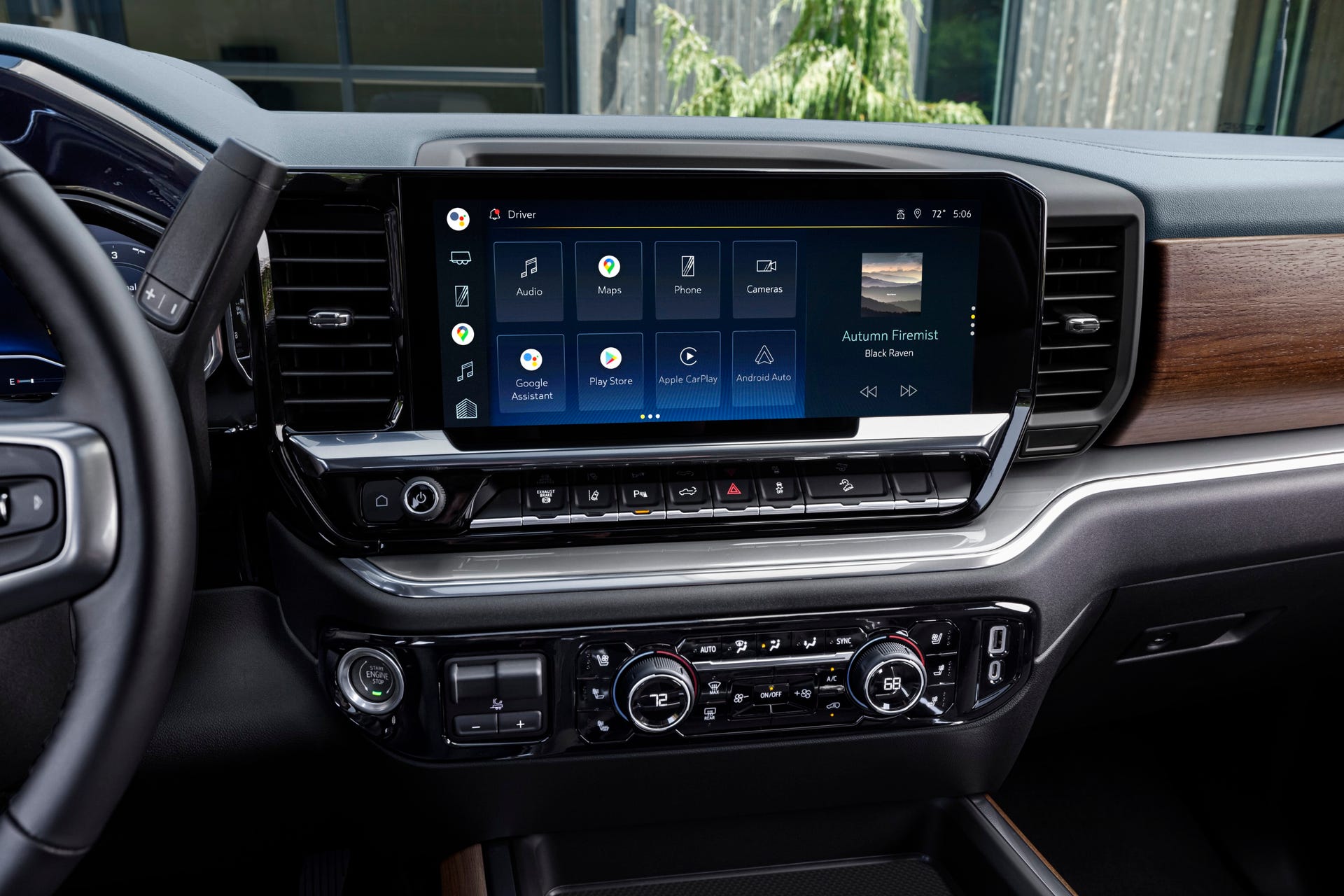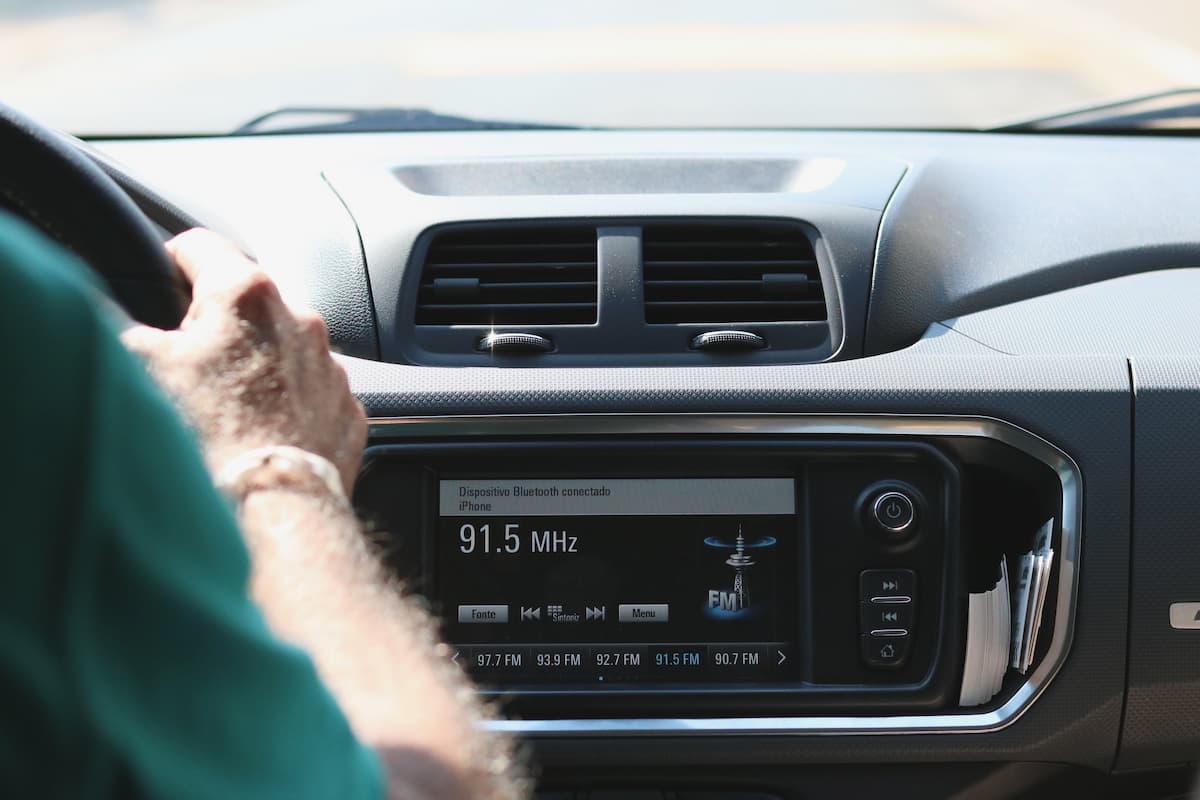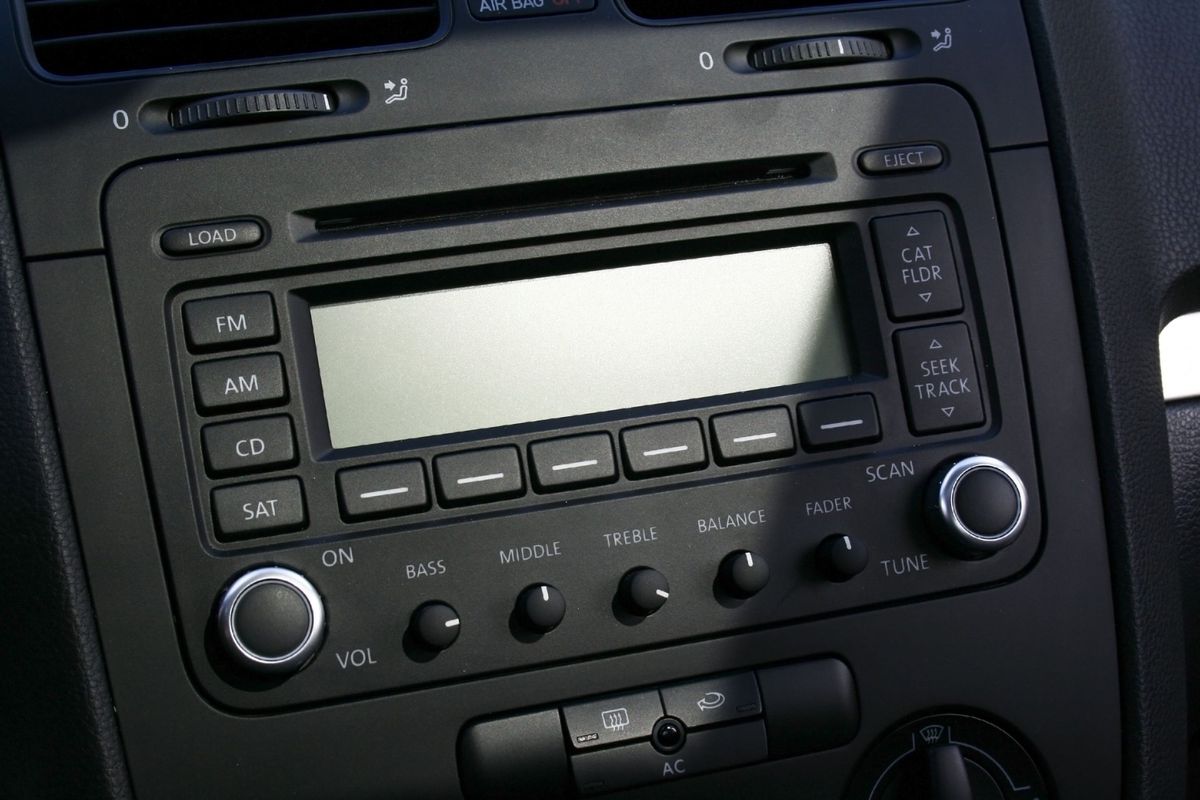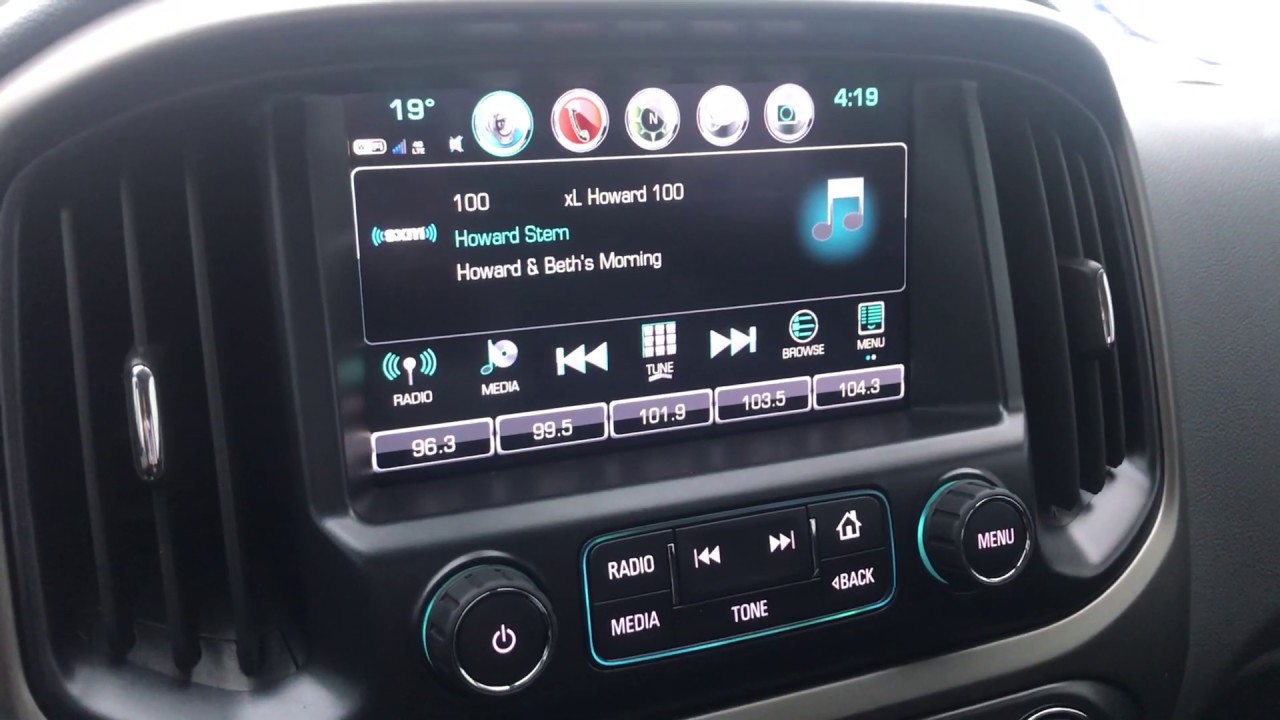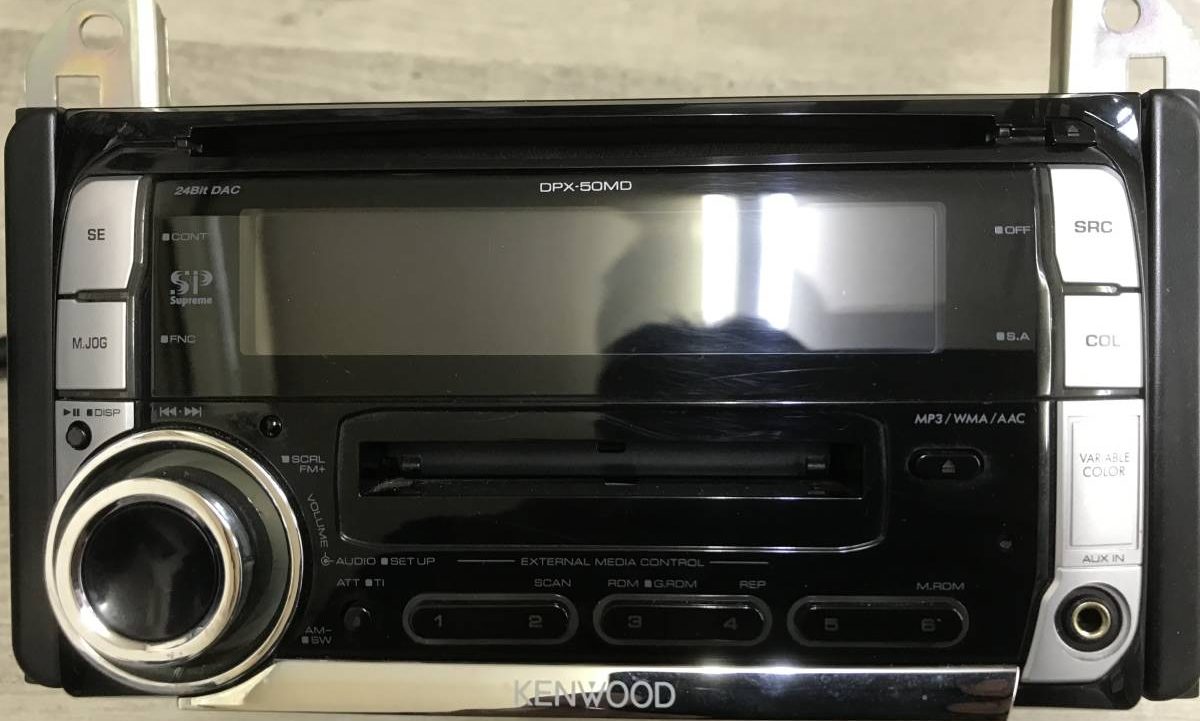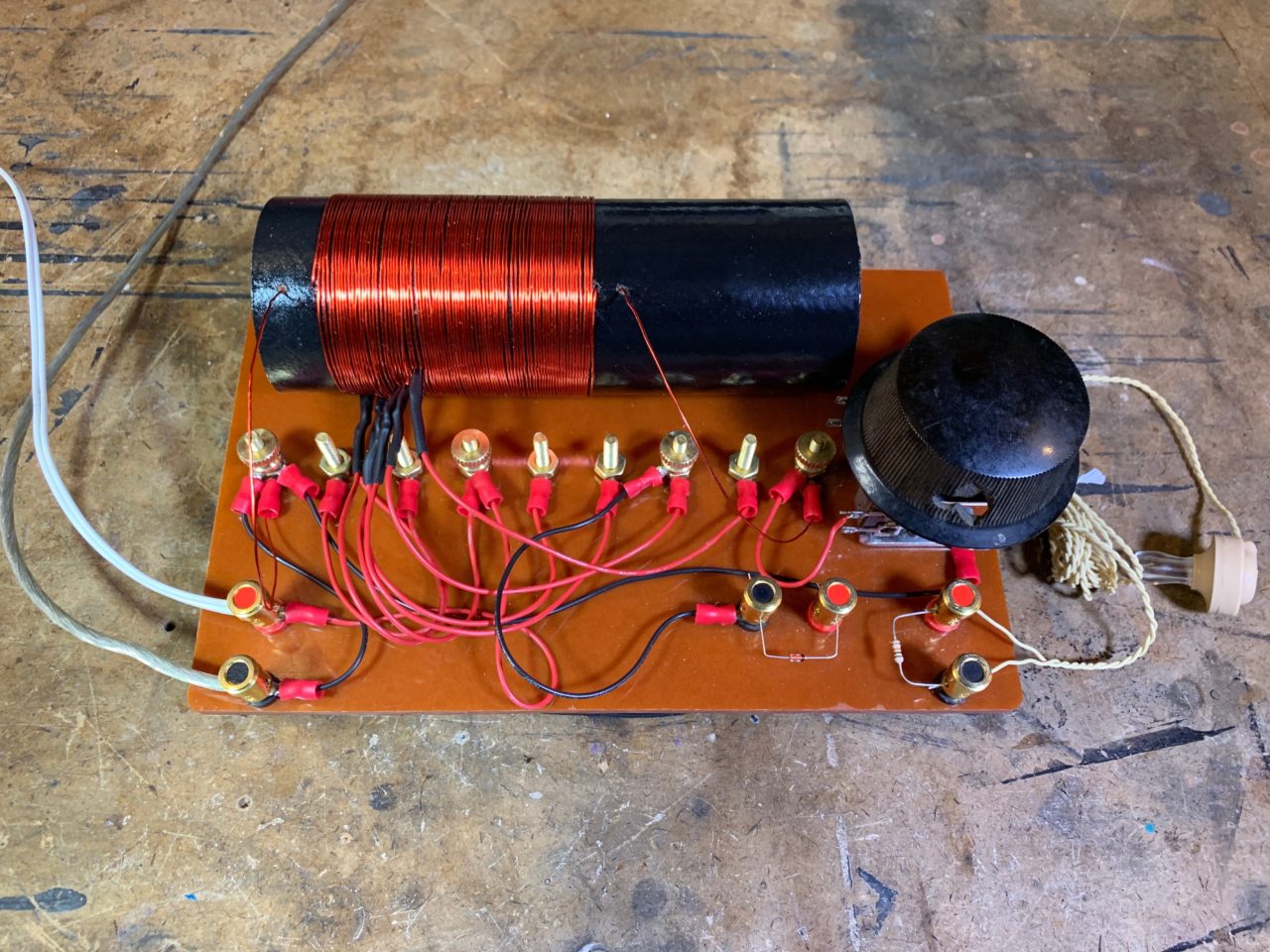Home>Devices & Equipment>Radio>How To Broadcast Radio


Radio
How To Broadcast Radio
Modified: January 22, 2024
Learn how to broadcast radio effectively with our comprehensive guide. Discover the secrets to creating engaging content and connecting with your audience today.
(Many of the links in this article redirect to a specific reviewed product. Your purchase of these products through affiliate links helps to generate commission for AudioLover.com, at no extra cost. Learn more)
Table of Contents
- Introduction
- Understanding Radio Broadcasting
- Setting Up Your Radio Station
- Acquiring the Necessary Equipment
- Installing Broadcasting Software
- Creating a Broadcast Schedule
- Obtaining Licenses and Permissions
- Building Your Listener Base
- Promoting Your Radio Station
- Broadcasting Live Shows
- Managing Your Radio Station
- Troubleshooting and Technical Support
- Conclusion
Introduction
Welcome to the world of radio broadcasting! Whether you’re a passionate music lover, an audio enthusiast, or you have a message you want to share with the world, starting your own radio station can be an exciting and rewarding endeavor. With advances in technology, setting up a radio station has become more accessible than ever before.
In this comprehensive guide, we will take you through the step-by-step process of how to start and broadcast on your very own radio station. We’ll cover everything from understanding radio broadcasting to acquiring the necessary equipment, obtaining licenses and permissions, building your listener base, promoting your station, and managing your broadcasts.
Radio broadcasting is a powerful medium that allows you to connect with an audience in a unique and intimate way. It provides a platform for personal expression, music discovery, and community engagement. Whether you’re interested in hosting a talk show, playing your favorite music, or even curating a niche genre, the possibilities are endless.
Before we dive into the technicalities, it’s important to have a clear vision of what you want to achieve with your radio station. Are you looking to entertain, educate, inform, or a combination of these? Define your target audience and the type of content you want to broadcast. This will help guide you in selecting the right equipment, software, and marketing strategies later on.
Remember, radio broadcasting is not just about playing music or talking into a microphone. It’s about creating a connection with your listeners, providing value, and offering a unique experience that sets your station apart. Your passion and enthusiasm will be key drivers in making your radio station successful.
So, get ready to embark on this exciting journey as we navigate the ins and outs of starting and broadcasting on your own radio station. Let’s begin with gaining a solid understanding of radio broadcasting and its various components.
Understanding Radio Broadcasting
Radio broadcasting is the method of transmitting audio content through radio waves, allowing a large number of people to listen to the same program simultaneously. It has been a popular form of media for over a century, providing entertainment, information, and news to audiences around the world.
One of the key aspects of radio broadcasting is frequency modulation (FM) or amplitude modulation (AM). FM is commonly used for commercial radio stations, while AM is often used for talk radio and news stations. These broadcasting methods involve converting audio signals into electromagnetic waves, which are then transmitted through antennas and received by radios.
Radio broadcasts can cover a wide range of content, including music, talk shows, sports commentary, news updates, and more. The content is typically organized into programs, aired at specific times, and can be either pre-recorded or broadcasted live.
Radio broadcasting offers several advantages compared to other forms of media. It is accessible to a wide audience, as radio receivers are relatively inexpensive and can be found in homes, cars, and portable devices. Radio is also a more mobile-friendly medium, allowing listeners to tune in from various locations without the need for a stable internet connection.
In addition to its reach and mobility, radio broadcasting fosters a sense of local community. It serves as a platform for local news, events, and discussions, allowing individuals and organizations to connect and engage with their immediate surroundings. Local radio stations often play a vital role in promoting local culture, music, and supporting local businesses.
With the advent of internet streaming, radio broadcasting has expanded its reach even further. Many radio stations now offer online streaming services, enabling listeners from around the world to tune in and enjoy their favorite programs. Online platforms also provide opportunities for interaction between radio hosts and their audience through social media, live chats, and call-ins.
Understanding the fundamentals of radio broadcasting is essential to ensure a smooth and successful experience as you start your own station. In the next sections, we will explore the steps involved in setting up your station, acquiring the necessary equipment, obtaining licenses, building your listener base, and broadcasting live shows.
Setting Up Your Radio Station
Setting up your own radio station requires careful planning and organization. Before you begin, it’s important to define the scope and vision of your station. Determine the type of content you want to broadcast, the target audience you want to reach, and the goals you want to achieve.
Here are the steps involved in setting up your radio station:
- Choose a Broadcasting Platform: Decide whether you want to broadcast over the airwaves or through online streaming. Over-the-air broadcasting requires a license and the use of radio frequencies, while online streaming enables you to reach a global audience without the need for a physical transmitter.
- Acquire the Necessary Equipment: Depending on your chosen broadcasting platform, you will need specific equipment. For over-the-air broadcasting, you will need a transmitter, antennas, audio mixer, microphones, and audio playback devices. For online streaming, you will need a computer, audio interface, microphones, and headphones.
- Set Up Your Studio: Dedicate a space in your home or a separate location for your studio. Ensure that it is soundproofed, well-lit, and equipped with all the necessary equipment and furniture, including desks, chairs, and storage for your audio files and equipment.
- Install Broadcasting Software: Choose a reliable broadcasting software that allows you to manage your playlists, schedule your programs, and broadcast live shows. There are several options available, both free and paid, such as SAM Broadcaster, Radio.co, and Mixxx.
- Connect Your Equipment: Set up your equipment by connecting your microphones, audio mixer, audio interface, and other devices to your computer. Ensure all the necessary drivers and software are installed for seamless operation.
- Test Your Setup: Before you go live, test your equipment, software, and broadcasting setup. Ensure that all audio levels are properly balanced, and there are no technical issues or glitches that could affect the quality of your broadcasts.
- Obtain Necessary Licenses and Permissions: If you plan to broadcast over the airwaves, you will need to obtain licenses from your local regulatory authority. This will involve completing the necessary paperwork and paying the required fees. For online streaming, you may need to comply with copyright regulations and obtain appropriate licenses for the music or content you plan to broadcast.
By following these steps, you can establish a solid foundation for your radio station. In the next sections, we will delve deeper into the specifics of acquiring the necessary equipment, installing broadcasting software, creating a broadcast schedule, obtaining licenses and permissions, building your listener base, promoting your station, and managing your broadcasts.
Acquiring the Necessary Equipment
Acquiring the necessary equipment is a crucial step in setting up your radio station. The type of equipment you need will depend on your chosen broadcasting platform and the scale of your operation. Here is an overview of the essential equipment you may require:
- Transmitter: If you plan to broadcast over the airwaves, you will need a transmitter to convert your audio signals into radio waves. The power output of the transmitter should be chosen based on the coverage area you intend to reach.
- Antennas: Antennas are used to transmit radio signals and ensure widespread coverage. The type and placement of antennas will depend on the wavelength and frequency you are using.
- Audio Mixer: An audio mixer allows you to control and adjust the volume, tone, and balance of different audio sources. It is essential for producing high-quality audio in your broadcasts.
- Microphones: Good quality microphones are essential for capturing clear and professional-sounding audio. Choose microphones based on the type of content you plan to broadcast, such as dynamic microphones for voice recordings and condenser microphones for music or studio recordings.
- Audio Playback Devices: These devices are used to play pre-recorded music, jingles, advertisements, or other audio files during your broadcasts. They can include CD players, MP3 players, or even computers with appropriate software installed.
- Computer: A computer acts as the central hub for running broadcasting software, managing your audio files, and controlling your broadcasts. Ensure that the computer has sufficient processing power and storage capacity for your broadcasting needs.
- Audio Interface: An audio interface connects your microphones and other audio devices to your computer, providing high-quality audio input and output. It allows you to record and monitor your broadcasts with low latency and optimal sound quality.
- Headphones: Good quality headphones are important for monitoring your broadcasts and ensuring that the audio is clear and balanced. Select headphones that provide accurate sound reproduction and a comfortable fit for long durations.
- Cables and Connectors: Ensure that you have the necessary cables and connectors to connect your equipment. This includes XLR cables for microphones, RCA or TRS cables for audio connections, and adapters for different input and output types.
When acquiring equipment, consider your budget, the quality of the audio output, and the scalability of your setup. Research different brands, read reviews, and consult with audio professionals or radio enthusiasts to make informed decisions.
Keep in mind that the equipment listed above is a general overview and may vary based on your specific broadcasting needs. As technology evolves, there may be more advanced options available. Take the time to understand your requirements and explore different options before making your purchase.
Once you have acquired the necessary equipment, the next step is to install broadcasting software, which we will explore in the next section.
Installing Broadcasting Software
Installing broadcasting software is a vital part of setting up your radio station. It allows you to effectively manage your broadcasts, schedule your programs, and ensure smooth operation during live shows. Here are the steps to install broadcasting software:
- Research and Choose Broadcasting Software: There are numerous broadcasting software options available, both free and paid. Research different software solutions and select one that meets your specific needs and budget. Popular choices include SAM Broadcaster, Radio.co, and Mixxx.
- Download and Install the Software: Visit the website of your chosen broadcasting software and download the installation package. Follow the instructions provided to install the software on your computer.
- Set Up Configuration Preferences: Once the software is installed, launch it and navigate to the configuration or preferences section. Here, you can customize various settings such as audio inputs and outputs, encoding preferences, server details, and streaming options.
- Import or Create Playlists: Broadcasting software allows you to create and manage playlists for your broadcasts. You can either import existing playlists or create new ones by selecting your audio files and arranging them in the desired order.
- Schedule Your Programs: Depending on the software, you can schedule your programs to automatically play at specific times. This feature is particularly useful for pre-recorded shows or time-specific content.
- Configure Live Broadcasting Settings: If you plan to host live shows, configure the software to enable live broadcasting. Set up the audio input sources, such as microphones or external audio interfaces, and ensure that the desired audio levels are properly adjusted.
- Test Your Broadcasts: Before going live, it’s essential to test your broadcasts to ensure everything is working correctly. Use the software’s preview or testing mode to simulate a broadcast and check the audio quality, volume levels, and transitions between songs or segments.
- Connect to Your Streaming Server: If you plan to stream your broadcasts online, configure the broadcasting software to connect to your chosen streaming server. Enter the server details, such as the stream URL and authentication credentials, to establish a connection.
Each broadcasting software may have a slightly different interface and feature set, so it’s important to familiarize yourself with the specific tools and options available in your chosen software. Many broadcasting software providers offer documentation, tutorials, and customer support to assist you in the installation and configuration process.
Take the time to explore the software’s capabilities and experiment with its features. Practicing and getting comfortable with the software will help you deliver professional and seamless broadcasts to your listeners.
Now that you have installed the broadcasting software, you are ready to create a broadcast schedule and start engaging with your audience. In the next section, we will discuss the importance of creating a well-planned broadcast schedule for your radio station.
Creating a Broadcast Schedule
A well-planned broadcast schedule is essential for the success of your radio station. It helps you organize your content, maintain consistency, and engage your audience by delivering the right programs at the right times. Here’s how to create an effective broadcast schedule:
- Define Your Programming Strategy: Determine the type of content you want to broadcast and the target audience you want to reach. Consider the demographics, interests, and preferences of your audience when planning your programming.
- Identify Core Programs: Choose the core programs or shows that will be the mainstay of your station. These can include music playlists, talk shows, interviews, news updates, or any other format that aligns with your station’s vision.
- Allocate Time Slots: Divide your broadcasting hours into time slots and assign specific programs or shows to each slot. Consider factors such as peak listening times, audience demand, and the balance of different types of content throughout the day.
- Create Variety and Flow: Ensure that your broadcast schedule offers variety and maintains a smooth flow. Mix up different genres of music, alternate between talk shows and music playlists, and plan for transitions that keep your listeners engaged.
- Consider Daily and Weekly Themes: Incorporate daily or weekly themes in your schedule to add interest and appeal. For example, you can have “Throwback Thursday” where you play nostalgic music or “Artist Spotlight” days where you focus on showcasing a particular artist or band.
- Leave Room for Flexibility: While having a well-structured schedule is important, it’s also important to leave room for flexibility. This allows you to provide timely updates, breaking news, or accommodate last-minute changes in programming if needed.
- Communicate and Promote the Schedule: Once you have created your broadcast schedule, make sure to communicate it to your audience. Display your schedule prominently on your station’s website, promote it on social media, and mention upcoming shows during your broadcasts to generate anticipation and engagement.
- Collect Feedback and Adjust: Pay attention to listener feedback and monitor the performance of your programs. Use audience analytics, surveys, and social media interactions to gauge the response to your schedule. Adjust and refine your schedule based on the feedback to meet the evolving needs and preferences of your audience.
Creating a thoughtful and well-structured broadcast schedule not only helps you stay organized but also builds a loyal listenership. Regularly updating and refreshing your schedule with new content and engaging programs will keep your audience coming back for more.
In the next section, we will dive into the importance of obtaining the necessary licenses and permissions to ensure compliance and legality in broadcasting.
Obtaining Licenses and Permissions
Obtaining the necessary licenses and permissions is an important step in setting up and running a legal and compliant radio station. It ensures that you have the rights to broadcast copyrighted content, adhere to regulatory guidelines, and avoid potential legal issues. Here’s what you need to know about licenses and permissions:
- Copyright Licenses: If you plan to play music on your radio station, you will need to obtain the appropriate licenses from the respective music licensing organizations in your country. In the United States, for example, this includes licenses from organizations like ASCAP, BMI, and SESAC.
- Performance Royalties: Along with obtaining copyright licenses, you will need to pay performance royalties to the songwriters, composers, and publishers whose music you play. These royalties ensure that the creators are compensated for the use of their work.
- Public Performance Licenses: In addition to copyright licenses, you may also need a public performance license if you plan to broadcast your radio station in public spaces like restaurants, shops, or offices. This license grants you the right to publicly perform musical works.
- Local Regulatory Approvals: Depending on your country and jurisdiction, you may need to obtain regulatory approvals or licenses to legally operate your radio station. This ensures that you comply with broadcasting standards, spectrum allocation regulations, and other local requirements.
- Community Radio Licenses: If you’re setting up a community radio station, there may be specific licenses or permits you need to obtain. Community radio stations often have a more localized focus and cater to the needs and interests of specific communities.
- Compliance with Broadcasting Codes: Familiarize yourself with broadcasting codes and regulations in your jurisdiction. These codes govern aspects such as decency, obscenity, political advertising, and equal access to airtime. Ensuring compliance with these codes helps you maintain a fair and responsible broadcasting environment.
- Consult with Legal Professionals: It is highly recommended to consult with legal professionals who specialize in media and broadcasting. They can provide guidance on the specific licenses and permissions required in your jurisdiction and help navigate the complexities of the legal landscape.
Failure to obtain the necessary licenses and permissions can result in legal consequences, including fines, penalties, or even the shutdown of your radio station. It is essential to prioritize compliance and ensure that you have all the required paperwork and agreements in place before you start broadcasting.
Remember, obtaining licenses and permissions is not just about legal compliance; it also demonstrates your respect for the artistic work of creators, establishes trust with your audience, and helps support the sustainability of the music industry.
In the next section, we will discuss strategies for building your listener base and increasing the reach and popularity of your radio station.
Building Your Listener Base
Building a strong and dedicated listener base is crucial for the success of your radio station. The more listeners you have, the greater the impact and influence of your broadcasts. Here are strategies for effectively building your listener base:
- Define Your Target Audience: Clearly identify your target audience, their demographics, interests, and preferences. This will help you tailor your content, promotions, and marketing efforts to appeal to your ideal listeners.
- Create Engaging Content: Develop compelling and high-quality content that resonates with your target audience. Whether it’s curated music playlists, informative talk shows, or engaging discussions, your content should captivate and provide value to your listeners.
- Utilize Social Media: Leverage the power of social media platforms to promote your radio station and engage with your audience. Create dedicated pages/profiles for your station, post regular updates, share behind-the-scenes content, and encourage listeners to interact and share your broadcasts.
- Collaborate with Influencers and Guests: Partner with relevant influencers, guest DJs, or popular personalities in your niche to attract their followers and expand your reach. Guest appearances and collaborations can bring new listeners to your station and create buzz around your broadcasts.
- Engage in Cross-Promotion: Collaborate with other radio stations or content creators in complementary fields for cross-promotion. This can involve promoting each other’s shows, featuring guest appearances, or organizing joint events to reach a broader audience.
- Run Contests and Giveaways: Organize contests and giveaways to incentivize listeners to tune in and engage with your station. Offer exclusive opportunities, such as meet-and-greets with artists or merchandise giveaways, to create excitement and encourage participation.
- Collect and Act on Listener Feedback: Pay attention to listener feedback and suggestions. Create opportunities for listeners to provide feedback, whether through surveys, social media polls, or direct messages. Use this feedback to improve your content, make programming decisions, and enhance the overall listening experience.
- Local Outreach and Community Involvement: Engage with your local community by attending events, sponsoring local activities, or hosting on-site broadcasts. By establishing connections with the community, you can build a loyal listener base and position your station as a valuable local resource.
- Continuous Promotion and Marketing: Consistently promote and market your radio station across various channels. This can include online advertising, partnerships with local businesses, promoting your station on relevant forums or blogs, and leveraging email marketing campaigns.
Building a listener base takes time and effort. Stay consistent, provide quality content, and actively engage with your audience to cultivate a loyal and enthusiastic following. Remember to adapt your strategies based on analytics, listener feedback, and emerging trends to continuously grow and evolve your station.
In the next section, we will discuss effective strategies for promoting your radio station to reach a wider audience.
Promoting Your Radio Station
Promoting your radio station is crucial for increasing awareness, attracting new listeners, and expanding your reach. Effective promotion strategies can help you stand out from the competition and establish a strong presence in the market. Here are some strategies to promote your radio station:
- Develop a Brand Identity: Create a unique and memorable brand identity for your radio station. This includes designing a logo, selecting a color scheme, and developing a consistent visual style across all promotional materials. Your brand should reflect the personality, values, and target audience of your station.
- Optimize Your Online Presence: Ensure your radio station has a professional website that showcases your content, schedule, and contact information. Optimize your website for search engines and utilize SEO techniques to improve your online visibility. Maintain an active presence on social media platforms relevant to your target audience.
- Partner with Influencers and Collaborators: Collaborate with influencers, bloggers, or social media personalities who have a significant following in your niche. Arrange for them to mention, review, or feature your radio station in their content to reach a wider audience.
- Create Compelling Content: Produce engaging and shareable content that sparks interest and encourages listeners to share it with their networks. This can include podcasts, interviews, behind-the-scenes videos, or unique music playlists. Quality content will attract new listeners and keep them coming back for more.
- Utilize Email Marketing: Build an email list of listeners and use it to send regular newsletters, updates, and exclusive content. Provide incentives for people to sign up, such as access to exclusive downloads, special discounts, or early announcements.
- Run Ad Campaigns: Invest in targeted online or offline advertising campaigns to raise awareness of your radio station. Consider advertising on platforms where your audience spends time, such as social media, music streaming platforms, or local print media.
- Collaborate with Local Businesses: Partner with local businesses, such as cafes, restaurants, or event organizers, to promote your station. It can involve sponsoring community events, providing live broadcasts from their premises, or organizing joint promotions.
- Participate in Events: Attend local events, fairs, or festivals relevant to your target audience. Set up a booth or conduct live broadcasts from the event to interact with attendees and promote your station.
- Create Engaging Social Media Campaigns: Run creative and interactive campaigns on social media to engage with your audience. This can include contests, polls, or challenges that encourage followers to participate, share, and spread the word about your station.
- Network with Other Industry Professionals: Attend industry conferences, seminars, or meetups to network with fellow professionals in the radio industry. Establish connections, share experiences, and explore collaborative opportunities that can lead to cross-promotion and new listeners.
Remember to track the effectiveness of your promotional efforts to determine which strategies are yielding the best results. Analyze website traffic, social media engagement, email open rates, and listener feedback to refine your promotional campaigns.
By implementing a combination of these promotion strategies, you can increase the visibility and reach of your radio station, attract new listeners, and foster a loyal and engaged audience.
In the next section, we will explore the exciting world of broadcasting live shows and connecting with your listeners in real-time.
Broadcasting Live Shows
Broadcasting live shows is a dynamic and interactive way to engage with your listeners in real-time. It allows you to showcase your hosting skills, interact with callers or online chat participants, and create an immediate connection with your audience. Here’s how to effectively broadcast live shows on your radio station:
- Plan Your Show Format: Determine the format and structure of your live show. Decide if it will be a talk show, a music show with live DJ sets, an interview-based show, or a combination of different elements. Outline the segments, topics, and timings for a smooth flow.
- Prepare Your Content: Research and prepare your content in advance. This includes creating talking points, compiling listener requests, preparing interview questions, or selecting music playlists that align with the theme of the show.
- Promote Your Live Show: Promote your upcoming live show on your website, social media platforms, and during regular broadcasts. Encourage listeners to tune in during the scheduled time and spread the word to their networks.
- Engage with Your Audience: During the live show, actively engage with your audience. Take phone calls, respond to online chat messages, and encourage listener participation through polls, questions, or live requests. This interaction makes the show more enjoyable and ensures your listeners feel connected.
- Manage Technical Aspects: Pay close attention to technical aspects such as audio quality, volume levels, and transitions between segments or songs. Test your equipment and software before going live to avoid any technical glitches. Make sure you have a backup plan in case of unforeseen issues.
- Be Authentic and Energetic: Bring your personality, enthusiasm, and authenticity to the live show. Engaging storytelling, humor, and a genuine connection with your audience will make the experience more enjoyable and keep listeners coming back for more.
- Invite Guest Speakers or Performers: Spice up your live shows by inviting guest speakers, experts, or performers to join you. This can add diversity, new perspectives, and a fresh dynamic to your broadcasts.
- Record and Share the Show: Record your live shows and make them available as on-demand episodes. This allows listeners who couldn’t tune in live to catch up later. Share the recorded shows on your website, social media, and podcast platforms to expand your reach.
- Solicit Feedback and Adapt: Encourage listeners to provide feedback on your live shows. Ask for their input on what they enjoyed and what they would like to see improved. This feedback helps you refine your hosting skills, improve the quality of your shows, and meet the expectations of your audience.
- Continue to Evolve: As you gain experience and grow your listener base, continually experiment, and evolve your live show format. Embrace new ideas, incorporate listener suggestions, and stay connected with industry trends to keep your broadcasts fresh and engaging.
Broadcasting live shows is an opportunity to connect with your audience in a personal and immediate way. It allows you to create memorable experiences, foster a loyal fan base, and establish a strong presence in the radio industry.
In the next section, we will discuss important aspects of managing your radio station to ensure smooth operations and continued success.
Managing Your Radio Station
Managing your radio station efficiently is crucial to ensure smooth operations and continued success. It involves overseeing various aspects of your station, including content management, scheduling, team coordination, and technical maintenance. Here are key areas to focus on when managing your radio station:
- Content Management: Develop a system for organizing and managing your content. This includes maintaining a library of music, pre-recorded shows, jingles, and advertisements. Create a structured approach to categorize, update, and archive your content for easy access during broadcasts.
- Scheduling: Create a comprehensive broadcast schedule that outlines the timing and content for each program or show. Maintain a calendar to track upcoming shows, promotions, and any special events. Regularly review and update the schedule to accommodate new content and maintain a diverse programming lineup.
- Team Coordination: If you have a team working on your station, effective coordination and communication are essential. Delegate responsibilities, set clear expectations, and establish regular check-ins to ensure smooth collaboration. Foster a positive and supportive work environment that encourages creativity and teamwork.
- Technical Maintenance: Regularly maintain and update your equipment and software to ensure optimal performance. This includes checking audio levels, conducting sound tests, and troubleshooting any technical issues. Create a backup plan for critical equipment failure to minimize disruptions during live broadcasts.
- Financial Management: Keep track of your station’s finances by maintaining accurate records of income and expenses. Monitor advertising revenue, sponsorship deals, and other revenue streams. Set a budget and ensure proper financial management to sustain and grow your station.
- Listener Feedback and Analytics: Pay attention to listener feedback and monitor audience analytics. Engage with your audience through social media, emails, or surveys to gather feedback and insights. Analyze listener statistics, website traffic, and engagement metrics to make data-driven decisions and continuously improve your station.
- Continuous Learning and Skill Development: Stay updated with the latest trends, technologies, and industry news in the radio broadcasting field. Invest in skill development, attend relevant workshops or webinars, and network with other professionals to enhance your knowledge and stay ahead of the curve.
- Legal and Regulatory Compliance: Regularly review and ensure compliance with local broadcasting regulations, copyright laws, and licensing requirements. Stay informed about any regulatory changes that may impact your station and take appropriate measures to remain compliant.
- Engagement and Community Building: Actively engage with your audience through various platforms. Respond to listener inquiries, comments, or suggestions promptly and courteously. Foster a sense of community by organizing contests, listener meetups, or collaborations with local organizations to strengthen your station’s connection with its audience.
- Strategic Growth Planning: Continuously assess and refine your growth strategy. Set specific goals, identify opportunities for expansion, and develop plans to reach new audiences or explore new formats. Regularly evaluate your station’s performance and adapt your strategies as needed to achieve long-term success.
Managing your radio station requires a well-rounded approach that combines effective organization, effective communication, technical proficiency, and a dedication to meeting the needs and expectations of your audience. By effectively managing your station, you can optimize operations, provide quality content, and grow your listener base.
In the next section, we will discuss troubleshooting common technical issues and the importance of technical support in maintaining a smooth broadcasting experience.
Troubleshooting and Technical Support
While running a radio station, it’s essential to be prepared to handle technical issues and have access to reliable technical support. These troubleshooting skills and support channels ensure that any interruptions or glitches are resolved swiftly, allowing for a seamless broadcasting experience. Here’s what you need to know about troubleshooting and technical support:
- Identify Common Technical Issues: Familiarize yourself with common technical issues that may occur in radio broadcasting. These may include audio distortion, connectivity problems, software crashes, or hardware malfunctions. Understanding these issues will help you identify and resolve them more effectively.
- Perform Basic Troubleshooting: Develop a standard troubleshooting process to systematically address technical issues. This may involve checking connections, restarting equipment and software, adjusting audio settings, or updating drivers and software to resolve compatibility issues.
- Document Challenges and Solutions: Maintain a record of technical issues you encounter and the steps you took to resolve them. This documentation will be invaluable in troubleshooting similar issues in the future and can serve as a reference for team members or technical support personnel.
- Utilize Online Resources: Take advantage of online resources, forums, and community support specific to radio broadcasting. Online communities and knowledge bases can provide valuable insights, troubleshooting tips, and solutions shared by experienced broadcasters and technical professionals.
- Establish Communication Channels: Create clear channels of communication for your team or staff to report technical issues and seek assistance. This can be a dedicated email address, ticketing system, or a messaging platform where they can communicate the problem and receive guidance promptly.
- Partner with Technical Experts: Develop relationships with technical experts or consultants who specialize in radio broadcasting. These professionals can provide immediate assistance during critical situations and offer guidance for complex technical issues that you may encounter.
- Subscribe to Technical Support Services: Consider investing in technical support services that are tailored to radio stations. These services offer dedicated support, remote assistance, and troubleshooting expertise. Having access to experienced professionals can help expedite issue resolution, minimize downtime, and free up your time to focus on content creation and station management.
- Regularly Update and Maintain Equipment: Implement regular equipment maintenance schedules, including software updates, firmware upgrades, and inspections. Keeping your equipment up to date minimizes the chances of technical issues and ensures optimal performance.
- Stay Calm and Patient: It’s crucial to maintain composure and patience when encountering technical issues. Stress and panic can hinder problem-solving. Take a methodical approach, seek assistance when needed, and remember that technical challenges are a normal part of running a radio station.
Remember, technical issues are inevitable in the world of radio broadcasting. By expanding your troubleshooting skills, leveraging online resources and technical support, and maintaining your equipment, you can minimize disruptions and provide a seamless experience for your listeners.
In the next and final section, we will conclude our guide and summarize the key points to remember when starting and managing your radio station.
Conclusion
Congratulations on completing this comprehensive guide to starting and managing your own radio station! We’ve covered a wide range of topics, from understanding radio broadcasting to acquiring equipment, installing broadcasting software, building a listener base, promoting your station, broadcasting live shows, and managing technical challenges. Here’s a summary of the key points to remember:
- Radio broadcasting is a powerful medium that provides a unique and intimate connection with your audience.
- Define your vision, target audience, and content strategy to create a compelling radio station.
- Acquire the necessary equipment based on your chosen broadcasting platform.
- Install reliable broadcasting software that allows you to effectively manage your broadcasts.
- Create a structured broadcast schedule that offers variety and engages your audience.
- Obtain the necessary licenses and permissions to legally operate your radio station.
- Build a listener base by creating engaging content, utilizing social media, and collaborating with influencers.
- Promote your station through various channels, including online marketing, collaborations, and events.
- Engage with your audience through live shows, calls, online chat, and guest appearances.
- Manage your station efficiently by organizing content, coordinating your team, and maintaining equipment.
- Address technical issues through troubleshooting, online resources, and technical support services.
Remember, starting and managing a radio station is an ongoing journey that requires dedication, creativity, and adaptability. Stay in tune with your audience, continuously improve your content, and strive for excellence in all aspects of your broadcasts. Embrace new technologies, embrace feedback, and stay connected with industry trends to ensure your station remains relevant and successful.
We hope this guide has provided valuable insights and practical advice to help you navigate the world of radio broadcasting. Now it’s time to bring your passion, creativity, and unique voice to the airwaves and create an incredible radio station that captivates and inspires your listeners. Good luck on your radio broadcasting adventure!

